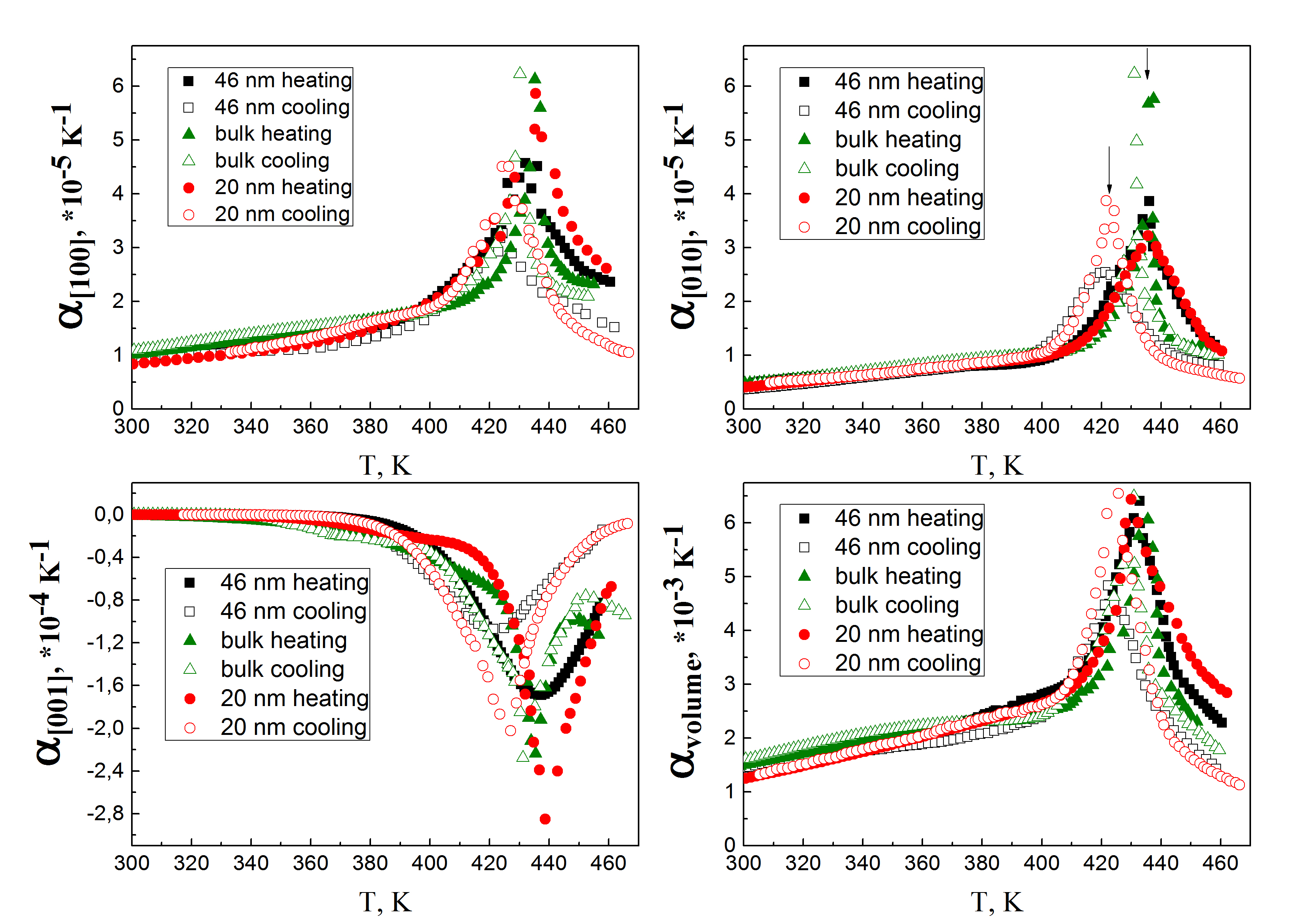NANOSYSTEMS: PHYSICS, CHEMISTRY, MATHEMATICS, 2019, 10 (2), P. 158–163
Thermal expansion coefficients of NaNO2 embedded into the nanoporous glasses
O. A. Alekseeva – Peter the Great St. Petersburg Polytechnic University, St. Petersburg, 195251 Russia; alekseevaolga0@gmail.com
A. A. Naberezhnov – Ioffe Institute, Russian Academy of Sciences, St. Petersburg, 194021 Russia; alex.naberezhnov@mail.ioffe.ru
D.Yu. Chernyshov – European Synchrotron Radiation Facility, Grenoble Cedex 9, France; dmitry.chernyshov@esrf.fr
A.V. Fokin – Ioffe Institute, Russian Academy of Sciences, St. Petersburg, 194021 Russia; midbarzin@yandex.ru
A. A. Sysoeva – Ioffe Institute, Russian Academy of Sciences, St. Petersburg, 194021 Russia; annasysoeva07@mail.ru
E. Rysiakiewicz-Pasek – Department of Experimental Physics, Faculty of Fundamental Problems of Technology, Wroclaw University of Science and Technology, Wybrzeźe Wyspiańskiego 27, 50370 Wroclaw, Poland; Ewa.RysiakiewiczPasek@pwr.edu.pl
The temperature evolution of the crystal structure of sodium nitrite nanoparticles has been studied with heating and cooling using synchrotron radiation diffraction. Nanocomposites have been prepared by embedding melted NaNO2 into the pores of the glasses, average diameters of the pores were 20 nm and 46 nm. Analysis of obtained diffraction patterns has revealed significant difference of the coefficients of thermal expansion (contraction) on heating and on cooling between nanostructured and massive sodium nitrite in the temperature range corresponding to the paraelectric phase. It is confirmed that in these nanocomposites the phase transition from the ferroelectric to paraelectric phase remains the first-order phase transition. Temperature hysteresis of this phase transition is about 10 K.
Keywords: ferroelectrics, phase transitions, nanocomposite materials, synchrotron radiation diffraction.
PACS 61.05.C; 65.40.De; 68.65.-k; 67.30.ht
DOI 10.17586/2220-8054-2019-10-2-158-163
